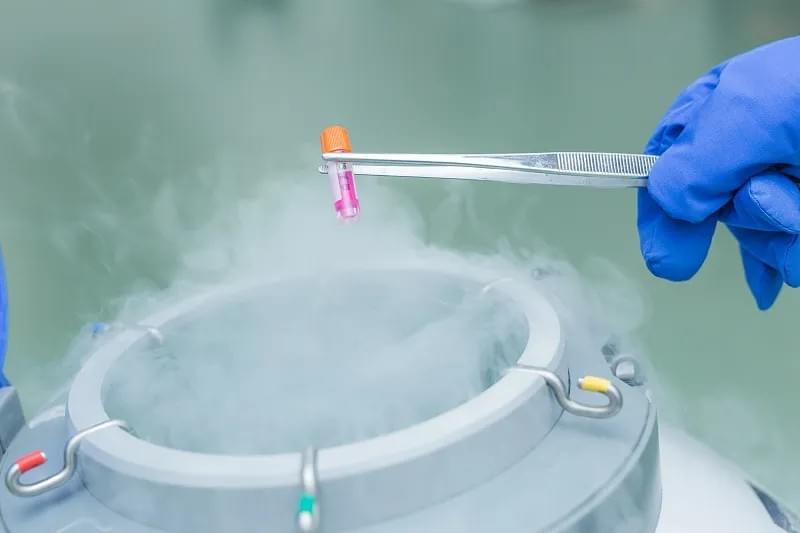In an era where reproductive science continues to break barriers, the combination of frozen eggs and surrogacy has emerged as a transformative pathway to parenthood. For individuals and couples facing fertility challenges, medical conditions, or personal timing constraints, this innovative approach offers renewed hope. Whether you're a single man seeking biological parenthood, a same-sex male couple building a family, or a woman preserving her fertility for future use, the integration of egg freezing and gestational surrogacy opens doors that were once closed.
This article explores the science, process, legal considerations, and emotional journey behind using frozen eggs in surrogacy arrangements. We’ll also examine how this option is reshaping global family-building trends and what prospective parents need to know before embarking on this journey.
The Science Behind Egg Freezing and Its Role in Surrogacy
Egg freezing, or oocyte cryopreservation, is a process that allows women to preserve their eggs for future use. Advances in vitrification—a rapid freezing technique—have dramatically improved the survival and fertilization rates of frozen eggs. Unlike the older slow-freezing methods, vitrification minimizes ice crystal formation, which can damage the delicate structure of the egg.
When these frozen eggs are later used in a surrogacy arrangement, they are thawed, fertilized with sperm (from a partner or donor) via in vitro fertilization (IVF), and the resulting embryo is transferred to a gestational surrogate’s uterus. The surrogate carries the pregnancy to term but has no genetic link to the child.
This process is particularly valuable for:
- Cancer patients who wish to preserve fertility before undergoing treatments like chemotherapy.
- Women delaying motherhood for career, personal, or medical reasons.
- Intended parents using donor eggs, which are often frozen and stored in egg banks.
- Same-sex male couples or single men who rely on donor eggs and surrogacy to have genetically related children.

How Frozen Eggs Are Used in Surrogacy: A Step-by-Step Overview
The journey from frozen eggs to a successful surrogacy birth involves several coordinated steps:
- Egg Retrieval and Freezing
A woman undergoes ovarian stimulation to produce multiple eggs, which are then retrieved and frozen. Alternatively, donor eggs may be used and sourced from an egg bank.
- Storage and Matching
Frozen eggs can be stored for years. When intended parents are ready, they select a gestational surrogate whose medical and psychological profile is carefully screened.
- Thawing and Fertilization
The frozen eggs are thawed and fertilized using intracytoplasmic sperm injection (ICSI) to maximize success rates. The resulting embryos are monitored for quality.
- Surrogate Preparation
The gestational surrogate undergoes hormone therapy to prepare her uterine lining for embryo transfer.
- Embryo Transfer and Pregnancy
One or more embryos are transferred to the surrogate’s uterus. If implantation is successful, pregnancy begins.
- Birth and Legal Parentage
After birth, legal processes ensure the intended parents are recognized as the legal parents, depending on the jurisdiction.
The use of frozen eggs adds flexibility to surrogacy timelines. Intended parents don’t need to synchronize their schedules with the egg donor’s cycle, as frozen eggs are readily available for use when the surrogate is ready.
Success Rates and Medical Considerations
Success rates for using frozen eggs in surrogacy are promising and continue to improve. According to data from the Society for Assisted Reproductive Technology (SART), the live birth rate per embryo transfer using frozen donor eggs ranges from 45% to 55%, depending on the age of the egg donor at the time of freezing.
Key factors influencing success include:
- Age of the egg provider: Eggs frozen before age 35 generally yield higher success rates.
- Quality of the clinic: Expertise in vitrification and IVF procedures significantly impacts outcomes.
- Surrogate health: A healthy, experienced surrogate enhances the chances of a successful pregnancy.
It’s important to note that while egg freezing has become more reliable, it is not a guarantee of future pregnancy. Intended parents should have realistic expectations and work with reputable fertility clinics and surrogacy agencies.

Legal and Ethical Landscape Across Countries
The legal framework for using frozen eggs in surrogacy varies widely across countries, making international navigation complex.
- United States: Most states allow gestational surrogacy with frozen eggs, and pre-birth parentage orders are often obtainable. However, laws differ by state, so legal counsel is essential.
- Canada: Surrogacy is permitted, but commercial arrangements are illegal. Using frozen donor eggs is allowed under strict regulations.
- United Kingdom: Altruistic surrogacy is legal, but intended parents must go through a parental order post-birth to gain legal custody.
- India and Thailand: Once popular destinations, both countries have tightened regulations, restricting international surrogacy and the use of donor gametes.
Prospective parents must consult legal experts familiar with both their home country and the surrogate’s jurisdiction to ensure compliance and protect parental rights.
Ethically, the use of frozen eggs raises questions about consent, long-term storage, and the rights of donors and surrogates. Transparent agreements, fair compensation, and psychological support are critical components of ethical surrogacy programs.
Emotional and Psychological Dimensions
The journey of building a family through frozen eggs and surrogacy is not only medical but deeply emotional. Intended parents often experience a mix of hope, anxiety, and gratitude. The surrogate, too, undergoes a significant emotional journey, forming a unique bond with the intended family while maintaining healthy boundaries.
Counseling is recommended for all parties involved. Mental health professionals specializing in reproductive medicine can help navigate complex feelings, set expectations, and foster positive communication.
Support groups and online communities also provide valuable peer connections, offering reassurance and shared experiences from others who have walked this path.

Global Trends and the Future of Frozen Egg Surrogacy
The demand for surrogacy using frozen eggs is rising globally. Egg banking has made donor eggs more accessible, reducing wait times and increasing genetic diversity. International intended parents often choose destinations with favorable legal environments and high medical standards.
Emerging technologies, such as artificial womb environments and improved genetic screening, may further enhance the safety and success of this process. Additionally, growing social acceptance of diverse family structures continues to drive demand.
For clinics and agencies, transparency, ethical practices, and patient-centered care are key to building trust and achieving positive outcomes.

Conclusion: A New Chapter in Family Building
Frozen eggs and surrogacy represent a powerful convergence of science, compassion, and human aspiration. They enable individuals and couples to overcome biological and logistical barriers, turning the dream of parenthood into reality.
As technology advances and societal norms evolve, this pathway will likely become even more accessible and mainstream. For those considering this journey, the key lies in thorough research, professional guidance, and emotional preparedness.
Whether you're preserving eggs today for future use or exploring surrogacy with frozen donor eggs, the future of family building has never looked brighter.
By understanding the process, legal landscape, and emotional nuances, intended parents can make informed decisions and embark on a journey filled with hope, resilience, and love.
